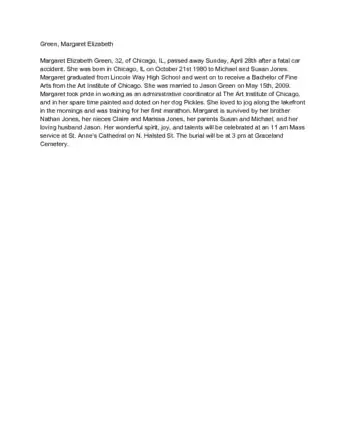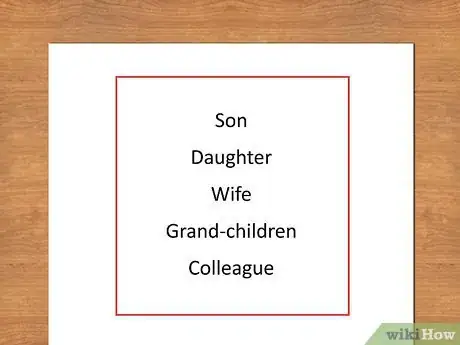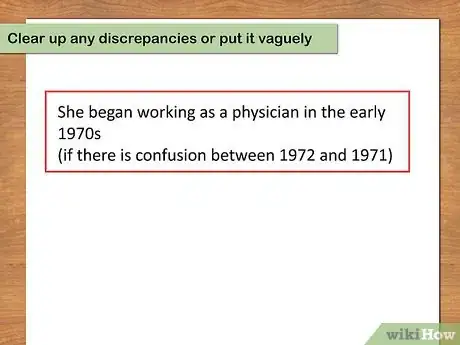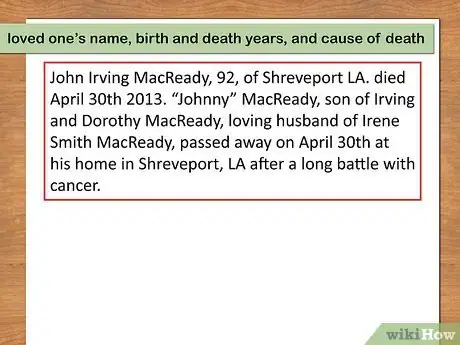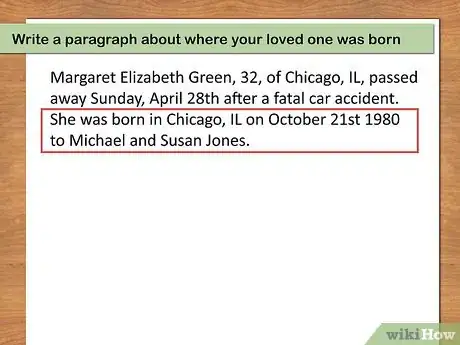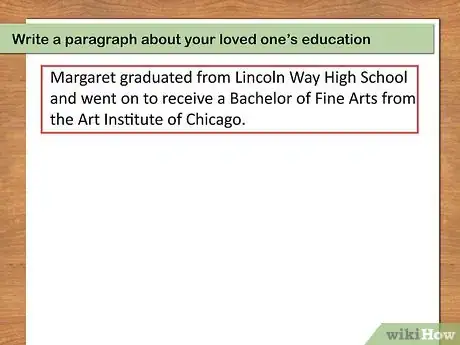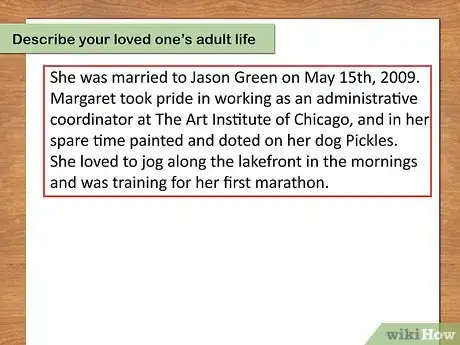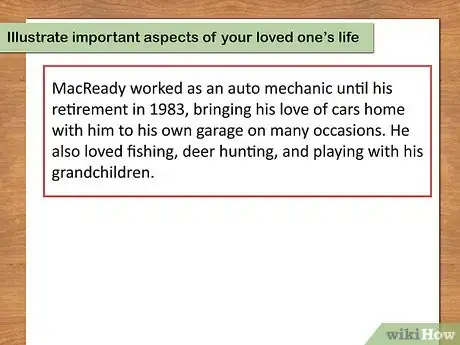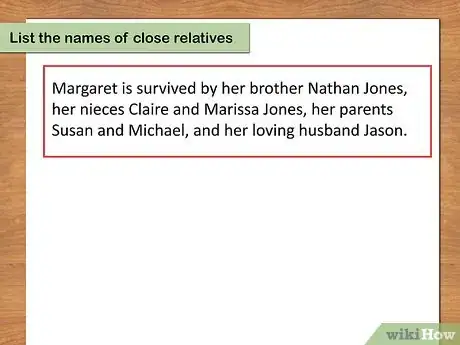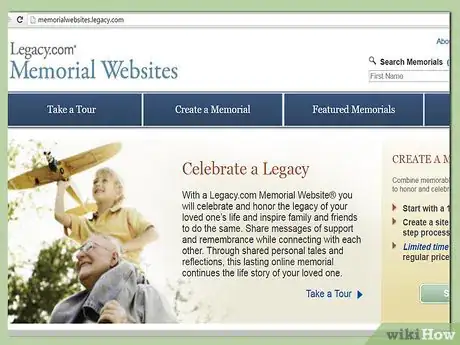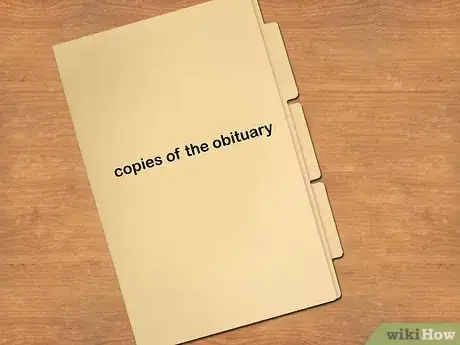This article was co-authored by David I. Jacobson. David I. Jacobson is the founder of Chicago Jewish Funerals, an independent Jewish owned funeral provider that evolved into two funeral homes in the Chicagoland area. With over 30 years of experience serving families, David is a leading expert on Kavod Hamet, the Jewish traditions of honoring and respecting the dead. David is an active funeral director that serves people planning and in need of funerals, lecturing to congregations, community groups, and schools extensively about the values of the Jewish funeral as well as the dying process and the value of one’s legacy.
wikiHow marks an article as reader-approved once it receives enough positive feedback. In this case, 100% of readers who voted found the article helpful, earning it our reader-approved status.
This article has been viewed 86,719 times.
Obituaries are life stories, accomplishments and public notifications about recently deceased people and they may have several different versions. While a newspaper obituary might be short and focused on survivors and funeral service information, the obituary in the funeral program can be longer and tell a more detailed story. It is the centerpiece of the funeral program, which can serve as a very informative keepsake about a person’s life and also about the final services.
Steps
Sample Obituaries
Gathering Information for the Obituary
-
1Write a list of the people who knew your loved one best. Include their contact information. These people will be able to provide information and anecdotes about the different stages and aspects of your loved one’s life.
- Aim to speak with no more than five people. While you want to get a complete picture, you don’t want to overwhelm yourself with information or repetitive stories.
- Make sure that your list includes people from different aspects of the person’s life. For example, include a colleague who will be able to supply details about your loved one’s work history and personality as a coworker. Often younger people, such as grandchildren, will have special perspectives and stories of their own that may add a warm, human touch to the obituary.
-
2Create a template that lists all the specific information you will need. [1] This is the scaffolding for the obituary you will write. You may know some of the information off the top of your head, but be sure to double-check important facts and dates. Other material can be filled in when you speak with the people who knew your loved one. Your list might include:
- Date and location of birth.
- Date and cause of death.
- Full names of parents and other close relatives who died before your loved one.
- Full names of spouses, children, and any other close survivors.
- Details about education. Did your loved one earn any diplomas or degrees? Where and in what year?
- Details about work. You don’t need to write a full resume of your loved one’s career, but make sure you have the general outlines about where he worked, what he did, and for how long.
- Any clubs or organizations that were important in your loved one’s life. For example, was she on a local sports team? Was he a Mason?
- Details of any special achievements. Did your loved on serve in the military, and was she decorated? Did your loved one win any prizes, or publish a book, or hold public office? You will need the correct names, titles, and years for any of these achievements.
- Details about funeral arrangements, including visiting hours and any requests about flowers or donations.
Advertisement -
3Talk to the people who knew your loved one best. Ask them for help in filling in the missing pieces of information about your loved one’s life. You might share your template with them and ask what information they know. Or, you might ask them what should be added. A colleague, for example, might know about an award your loved one received at work.
- If possible, try meeting with more than one person at a time. A group setting might generate memories as well as being a nice opportunity for quietly remembering and honoring your loved one.
-
4Gather anecdotes. The funeral program obituary has room for two or three anecdotes that capture the spirit of your loved one. Listen to the stories people share about your loved one and jot them down.
- Be sure to ask permission before including someone else’s anecdote in your obituary. For example, you might say: “Aunt Louise, is it alright if I tell that story about catching the rainbow trout in Grandpa’s obituary?” If they say no, let it go.
- Look for anecdotes that reflect larger themes in your loved one’s life. For example, if your loved one was known for helping others, an anecdote about the time she stopped to change a stranger’s tire in a snowstorm might be appropriate.
-
5Clear up any discrepancies using public records if necessary. If your grandmother says your grandfather graduated college in 1949, but your mother says it was 1951, call the university registrar to find out the correct year. Birth, marriage, and death years can be confirmed through a call to vital records offices in the relevant city or town.[2]
- If you can’t resolve a disagreement, consider omitting the information or putting it vaguely. For example, you might say: “She began working as a physician in the early 1970s” if one person says it was 1972 and another says it was 1971. You don’t want your obituary to become a source of tension at a difficult time.
Drafting the Obituary
-
1State your loved one’s name, birth and death years, and cause of death. The first paragraph of any obituary includes these details. You may also choose to include information about your loved one’s current residence.
- It is not necessary to go into detail about the cause of death, but only to share what feels appropriate. For example, you could say that your loved one died after a long illness or died suddenly.[3]
-
2Write a paragraph about where your loved one was born. Include her date of birth and the names of her parents. If there was a significant move in your loved one’s early life, mention it here. For example, you might want to state that he was born in Israel but immigrated to the United States as a young child.
-
3Write a paragraph about your loved one’s education. Include details about schools attended and degrees earned. This paragraph can also be the place to introduce important themes in your loved one’s life story. Did she first discover her love of literature while an English major in college, for example?
-
4Describe your loved one’s adult life, taking as many paragraphs as you need. The personal details you include will make this section meaningful to those who attend your loved one’s funeral.
- You might proceed by writing a paragraph on each significant aspect of your loved one’s life, like the things that were important to them, their relatives, their work, and so on.[4]
- Alternatively, you might choose to develop a narrative about your loved one. For example, if her crowning achievement was a position in national government, you might want to write several paragraphs describing how she earned the knowledge and experience necessary to get there.
-
5Illustrate important aspects of your loved one’s life. Use anecdotes and other personal details. Weave these elements into the larger life story. They should help to convey the overall tone of your loved one’s life.[5]
- For example, if your loved one adored jokes, you might include one or two of his most famous humorous quotes.
- The obituary of a beloved teacher might include a story from a former student about what it was like to be in her classroom.
-
6List the names of close relatives. You should include relatives who predeceased your loved one as well as your loved one’s survivors. Begin this paragraph by saying that your loved one was “preceded in death by” the close relatives who have already died. Then, say that your loved one “is survived by” the close relatives who are still living. It is customary to list the cities or towns where the living relatives currently reside.
-
7Write a final paragraph that includes details about funeral arrangements. State where your loved one will be buried or interred. While the newspaper version of the obituary should include details about the funeral service and visiting hours, the program obituary should be more general and simply record information about your loved one’s final resting place.
-
8End the obituary with a sentence of thanks. You may wish to offer thanks to those who made your loved one’s last days or weeks easier, for example at a hospital or hospice facility. You may also wish to thank the staff at the funeral home. Include the names of caregivers here.
Putting on the Finishing Touches
-
1Edit for length. A funeral program obituary is generally longer than obituaries that appear in newspapers.[6] However, they should not run to more than a page or, occasionally, two printed pages in the program itself.
-
2Choose photographs. The people who knew your loved one might have good photographs to include with the obituary. While it’s usual to have a serious, even formal picture of the deceased on the front or first page of the program, you may also want to include other images that capture your loved one’s life.[7]
- For example, you might include a photograph of your loved one enjoying her favorite vacation destination or participating in his favorite hobby.
- A photograph of your loved one at work may also convey the importance of that aspect of her life.
-
3Ask others close to your loved one for feedback. Have at least one other person read the draft of your obituary over. Ask them to double-check the factual information as well as looking for typos or errors.
-
4Tailor your obituary to different publications. You might want to include this obituary in a notice on the internet as well as in the funeral program. You might also want to share the obituary with a local newspaper or your loved one’s alumni magazine. Create different versions of the obituary that fit word-count requirements of the different venues.[8]
- Be sure to follow the formatting and submission guidelines for whatever venues you choose. Talk to the person designing and producing the funeral program about how to submit the text of the obituary as well as any images.
-
5Keep copies of the obituary to send to distant relatives and friends. Once the obituary is in the funeral program, it is a keepsake that will be appreciated by those who cared about your loved one.
- An obituary is a public call that someone has died. It may be easier for you and other loved ones to move on if others can acknowledge the person's passing.[9]
Expert Q&A
-
QuestionHow do you write an obituary with no service?
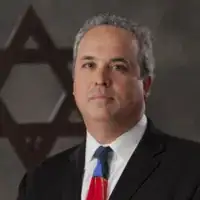 David I. JacobsonDavid I. Jacobson is the founder of Chicago Jewish Funerals, an independent Jewish owned funeral provider that evolved into two funeral homes in the Chicagoland area. With over 30 years of experience serving families, David is a leading expert on Kavod Hamet, the Jewish traditions of honoring and respecting the dead. David is an active funeral director that serves people planning and in need of funerals, lecturing to congregations, community groups, and schools extensively about the values of the Jewish funeral as well as the dying process and the value of one’s legacy.
David I. JacobsonDavid I. Jacobson is the founder of Chicago Jewish Funerals, an independent Jewish owned funeral provider that evolved into two funeral homes in the Chicagoland area. With over 30 years of experience serving families, David is a leading expert on Kavod Hamet, the Jewish traditions of honoring and respecting the dead. David is an active funeral director that serves people planning and in need of funerals, lecturing to congregations, community groups, and schools extensively about the values of the Jewish funeral as well as the dying process and the value of one’s legacy.
Funeral Home Director Write the obituary as you normally would—write about the person who died, their relatives, and things that were important to them. Then, say, "Services were held privately with the family."
Write the obituary as you normally would—write about the person who died, their relatives, and things that were important to them. Then, say, "Services were held privately with the family." -
QuestionHow should one address multiple marriages?
 PearlbelleTop AnswererWhen addressing multiple marriages in a formal obituary, try writing, 'he leaves behind his current wife of twenty four years (her name here) and two former wives, (their names here)."
PearlbelleTop AnswererWhen addressing multiple marriages in a formal obituary, try writing, 'he leaves behind his current wife of twenty four years (her name here) and two former wives, (their names here)."
References
- ↑ http://www.nolo.com/legal-encyclopedia/how-write-obituary.html
- ↑ http://www.cdc.gov/nchs/w2w.htm
- ↑ http://www.thenewsmanual.net/Manuals%20Volume%202/volume2_51.htm
- ↑ David I. Jacobson. Funeral Home Director. Expert Interview. 14 July 2020.
- ↑ http://www.nolo.com/legal-encyclopedia/how-write-obituary.html
- ↑ https://elegantmemorials.com/how-to-write-an-obituary
- ↑ http://www.nolo.com/legal-encyclopedia/how-write-obituary.html
- ↑ http://www.nolo.com/legal-encyclopedia/how-write-obituary.html
- ↑ David I. Jacobson. Funeral Home Director. Expert Interview. 14 July 2020.

